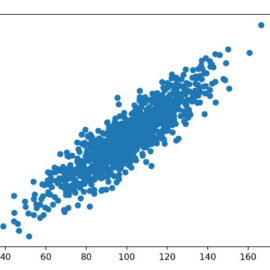

This article gives you a glimpse of what you can learn with Shortform. Shortform has the world’s best guides to 1000+ nonfiction books, plus other resources to help you accelerate your learning.
Want to learn faster and get smarter? Sign up for a free trial here .
Are you a good judge of character? What are some things you should look out for when trying to size up what a person is all about?
Knowing how to analyze people is an essential skill that will help you get ahead both in your personal and professional life. If you know how to judge someone’s character, you’ll be better at making friends, securing clients, and, generally, getting what you want. On the flip side, you’ll be harder to manipulate and take advantage of.
Keep reading to learn how to analyze people so you can connect with them more effectively.
People Wear Masks
Even though we’re all human, most of us don’t understand what drives other people to behave the way they do. This is because people hide their true selves: No one acts true to themselves all the time.
Starting from birth, we learn how to use our faces and bodies to get our parents to give us things, and we continue to act throughout our lives to fit into society. Acting completely honestly would result in social ruin—we would offend people and open ourselves up to so much judgment and insecurity it would affect our mental health.
We hide our negative feelings—such as superiority or insecurity—with words and sometimes mixed signals. A lot of the time we don’t even know we’re acting, and this conviction is part of what makes the mask believable.
However, no matter how good we are at masking, our real feelings are underneath somewhere, and they’re impossible to fully suppress, especially when we’re stressed, tired, angry, frustrated, or drunk. Accurate nonverbal cues leak out, often in microexpressions or in the tone of voice—people can look in mirrors to train their faces, but the voice is harder to change. You can learn how to analyze people and uncover their real natures by spotting these leaks.
Many people dislike the idea of acting or mask-wearing because it feels dishonest, but there are four reasons to study it
- Mask-wearing is impossible to avoid. Everyone acts, often subconsciously, so there’s no point getting upset about this because you can’t change it. If you don’t think you wear masks, think about how you interact with different people. You almost certainly behave differently with your boss than with your best friend.
- Mask-wearing can help you get ahead because it shows you in a positive light.
- If you don’t learn how to analyze people behind their masks, you’re vulnerable to being fooled by others.
- Those who choose not to mask are pushed to the fringes of society.
- Learning to see through masks will help you predict people. When someone does something hostile, there are always signs beforehand because strong emotions are impossible to entirely hide.
Learning how to analyze people behind their masks can help you:
1. Manage toxic types. Some people try to hide their socially inappropriate traits such as aggression, overambition, or arrogance. You can see through them (and then avoid them) by noticing their nonverbal cues (for example, a tall posture can indicate a desire to dominate), hypocrisy, or how they blame their actions on circumstance.
2. Make people like you. Design and wear an appealing mask to create favorable impressions of yourself. You can do this by demonstrating universally positive traits (like saintliness) and giving off appropriate nonverbal cues (stand tall to appear confident).
Pay Attention to Their Body Language
So, how can you get to know someone’s real personality—the one they hide behind the mask? First, learn how to analyze people’s body language—this includes their posture, how comfortable they appear, the way they smile, and the way they make eye contact.
In his book Surrounded by Idiots, Thomas Erikson provides a helpful framework for sizing up someone’s personality using body language cues:
Red Personality Type
According to Erikson, Red personalities are unapologetically ambitious and self-confident. They like to be in charge and are comfortable taking risks. People with this personality are extroverted and not afraid to speak their mind, even when it causes conflict.
You are dealing with a Red personality if their body language is direct and aggressive. They shake your hand firmly, look into your eyes, lean forward when speaking, and use sharp hand gestures. People with this personality type often wear serious, focused facial expressions unless actively engaged in a fun activity.
Yellow Personality Type
Yellow types have a charismatic personality and a bright outlook. They see life as a smorgasbord of delights and are the first to try something new. Their driving forces in life are joy and laughter.
When it comes to body language, Yellow personalities have little to no sense of personal space. They have no problem sitting close to another person, they enjoy hugging, and they touch people frequently. This might look like a knowing hand on the shoulder or a joking slap on the back. Yellow personality types smile without obvious reason and have a relaxed, comfortable posture.
Green Personality Type
Green personalities are even-tempered, kind, empathetic, and can go with the flow. Green personalities are unlikely to stand out in a crowd. They prefer to blend in rather than being the center of attention.
Green personality types maintain friendly eye contact, a gentle smile, and aren’t averse to hugging. They are okay with touching if they know you well, but they prefer personal space when it comes to strangers and acquaintances. This personality type tends to lean backward when sitting and generally maintain a relaxed posture.
Blue Personality Type
Like Green types, Blue personalities are introverted—but that’s where the similarities end. Unlike a Green-dominant person, who will go with the flow, the Blue personality is meticulous, deliberate, and cautious. Blue types can be seen from the outside as know-it-alls and “negative Nancies.”
Blue personalities exhibit the least motion in their body language of all the personality types. They’ll sit or stand perfectly still and deliver a message without hand gestures. Their facial expressions are subtle and controlled. People with this personality value personal space, and if you get too close, they’ll cross their arms or legs to signal discomfort.
Look for Details That Expose Patterns
You really don’t need to spend a lot of time with someone to understand what they are all about. In fact, you can size up a person from your first interaction. According to Malcolm Gladwell, the author of Blink, first impressions can actually be very accurate because they are based on a very “thin slice” of information about them.
Thin-slicing is using a small segment of information (for example, a 10-second video) to make a quick decision. When we thin-slice someone on a first impression, our unconscious mind zeroes in on the most important pieces of information and disregards the rest. This is why thin-slicing is often so accurate—it doesn’t involve processing a lot of information.
As evidence, Gladwell cites the research of Psychologist Samuel Gosling. Gosling asked 80 college students to fill out the Big Five Inventory, a widely used questionnaire that measures five personality traits: extraversion, agreeableness, conscientiousness, emotional stability, and openness to new experiences.
Then Gosling asked the close friends of those 80 students to rank them on the Big Five. Unsurprisingly, the friends showed that they knew the subjects pretty well. Each friend had a “thick slice” of experience with the subject, having spent a lot of time with him or her, and could judge their personality accurately.
Finally, Gosling sent someone who had never met the subject into the subject’s dorm room for 15 minutes. Gosling asked the stranger to assess the subject according to the five personality traits just by looking at that person’s bedroom.
Gosling discovered that you can make a surprisingly accurate judgment about someone you’ve never met just by looking around his or her dorm room for 15 minutes. Friends, as expected, were more accurate in rating extraversion and agreeableness. However, strangers were more accurate in rating conscientiousness, emotional stability, and openness to new experiences.
Why? Bedrooms expose patterns. They give a peek into your private life that is revealing. An unmade bed, posters on the wall, or a fluffy ottoman can tell you just as much about a person as meeting him or her, if not more.
A bedroom without its occupant inside it contains well-selected information. It excludes distracting and irrelevant information. Stereotypes triggered by a subject’s presence were absent. If you meet a quiet, econ major with glasses, you may never guess she’s a hardcore heavy metal fan. If you judge her by her vinyl and paraphernalia collection, you get a different picture. The people themselves weren’t there to get in the way. We can’t view ourselves objectively, so we often say confusing or contradictory things about ourselves to other people. By just looking at someone’s bedroom, we avoid this white noise.
Identify Their Most Important Value
Another approach to analyzing people is to identify what they value most in life. When you know what people value most, you can use that to motivate them, make them feel validated, or make a deal with them.
According to social psychologist Uriel G. Foa, each person has six primary resource needs stemming from childhood:
- Love (being accepted)
- Service (being cared for)
- Status (being recognized in a way that makes us feel proud)
- Money (having currency)
- Goods (having material items)
- Information (being taught or guided)
Each of us values and prioritizes one resource need above all others, and this resource drives our behavior.
- To identify people’s top value, you can listen for the things they consistently gripe or boast about, observe their behavior, and look for microexpressions and body language that communicate how they feel.
- A person who values love the most may give hugs to everyone everywhere she goes and desire acceptance from others.
- A person who values service may be the go-to organizer of baby showers and fundraisers, and she may long for others to care for her.
- A person who values status the most may continually complain that her bowling league didn’t award her a trophy for winning her match, and wish for others’ clothes to recognize her.
- A person who values money the most may constantly brag about the bonus she got and prioritize her finances.
- A person who values goods may collect swag like it’s gold and want material items.
- A person who values information may conduct relentless Google searches of everything from potential dates to medical conditions, to how to train dogs, and she may seek to be taught or guided.
Final Words
People are adept at hiding their true character because it helps them fit in and get what they want. Everyone does it, and some people do it to a greater degree than others. But no matter how good someone is at masking, they can’t hide everything.
At the heart of learning how to analyze people behind their social masks is knowing which details to look out for and which ones to discard. Specifically, pay attention to people’s body language across different situations and look for details that expose patterns. Try to look past stereotypes and take people’s own character judgments with a grain of salt.
If you enjoyed our article about how to analyze people, check out the following suggestions for further reading:
In The 48 Laws of Power, Robert Greene asserts that whether you like it or not, you’re part of a never-ending game of power. You’re either striving for and wielding power, or you’re a pawn being played by someone more powerful than you. You choose your role. This book is for those who prefer to be players rather than pawns. To turn you from an amateur into a master player, Greene has codified 48 laws of power based on historical examples of people who’ve excelled or failed at wielding power, with glorious or bloody results (or both).
Does the idea of attending a wedding solo or standing in a room full of strangers make you cringe? If so, best-selling author Vanessa Van Edwards has a message for you: You got this! In Captivate, she provides strategies to help you become a social superstar. Van Edwards argues that by taking control of social situations and presenting your best self, you can dazzle the people you want to know and forge meaningful relationships.

Want to fast-track your learning? With Shortform, you’ll gain insights you won't find anywhere else .
Here's what you’ll get when you sign up for Shortform :
- Complicated ideas explained in simple and concise ways
- Smart analysis that connects what you’re reading to other key concepts
- Writing with zero fluff because we know how important your time is









interesting information about personality types.